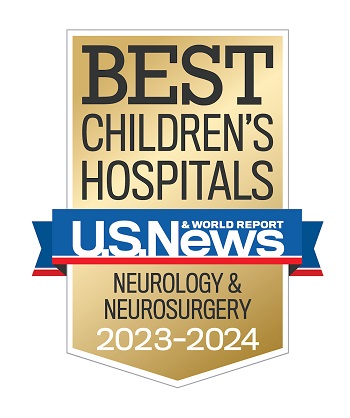Valley Children's Neurosurgery Services
 Ranked as one of the nation’s best children’s hospitals in Pediatric Neurology & Neurosurgery by U.S. News & World Report, our neurosurgery center provides comprehensive pediatric neurosurgery services for problems relating to the brain, spinal cord and peripheral nerves. Working collaboratively with other pediatric subspecialties such as neonatology, neurology, orthopaedic surgery, physiatry, ophthalmology, plastic and reconstructive surgery, otolaryngology (ENT) and oncology, the department ensures high-level, compassionate, coordinated care for infants, children and adolescents.
Ranked as one of the nation’s best children’s hospitals in Pediatric Neurology & Neurosurgery by U.S. News & World Report, our neurosurgery center provides comprehensive pediatric neurosurgery services for problems relating to the brain, spinal cord and peripheral nerves. Working collaboratively with other pediatric subspecialties such as neonatology, neurology, orthopaedic surgery, physiatry, ophthalmology, plastic and reconstructive surgery, otolaryngology (ENT) and oncology, the department ensures high-level, compassionate, coordinated care for infants, children and adolescents.
Minimally invasive and microsurgical techniques with advanced intra-operative tools are utilized to surgically treat a variety of neurosurgical conditions. Our surgical outcomes are excellent and our infection rates are one of the lowest in the country.
Advanced Neurosurgical Care and Technology
Our neurosurgeons use sophisticated equipment and technology including microsurgery, neuro-endoscopy, lasers and minimally invasive neurosurgical techniques and intra-operative image-guided navigation systems to provide advanced neurosurgical care for complex conditions. Our nurses in the operating room, intensive care unit and floors are expertly trained and experienced in providing care for children with neurosurgical problems.
- Ablation: Laser ablation surgery is a procedure which removes tumors and other lesions through the use of light and heat. Using ROSA™, an advanced surgical tool, a thin laser probe is placed in the brain through a small hole to heat up the area needing removal.
- ROSA: ROSA™ is a robotic surgical assistant, used to help surgeons navigate and position instruments in a brain without having to open the patient’s skull, as other traditional methods require. Read more >
- SEEG: Stereotactic electroencephalography (SEEG) is diagnostic surgical procedure where electrodes (the size of a pencil head) are placed through small holes in the skull to help identify where seizures are originating within a child’s brain. This procedure allows the doctors to monitor, record and pinpoint where seizures begin and helps doctors determine if surgical intervention is an option for treatment.
- Resection: A resection surgery is a procedure where a small portion of the brain where seizures originate is removed. This focal resection surgery is the most common type of epilepsy surgery.
- Vagus nerve stimulation (VNS): Vagus nerve stimulation is a medical treatment where a device delivers electic impulses to the vagus nerve.
- Responsive Neurosimulation Device (RNS®): Responsive Neurostimulation (also known as the RNS® System by NeuroPace) is a device that can monitor and respond to brain activity, ultimately stimulating the brain to quickly stop seizures or prevent seizures from starting.
Surgeries Performed
Our surgeries performed include, but are not limited to:
- Endoscopic surgery
- Brain tumors
- Hydrocephalus
- Epilepsy Surgery
Team Approach
We work closely with the Neonatal Intensive Care Unit in caring for newborns with congenital brain and spinal cord conditions or deformities. In addition, the following specialized multidisciplinary programs are offered in collaboration with other specialties:
- Craniofacial Program: Advanced multidisciplinary care to children with craniofacial conditions
- Neuro-Oncology Program: Treatment for malignant and benign brain and spinal cord tumors
- Epilepsy Surgical Program: State-of-the-art testing and treatment for children with seizures
- Hydrocephalus Program: Focuses on patients with either congenital or acquired hydrocephalus
- Spina Bifida Program: Provides multidisciplinary care for children with neural tube defects
- Concussion/Traumatic Brain Injury Program: Evaluates and treats children and adolescents who have sustained concussions and other traumatic brain injuries